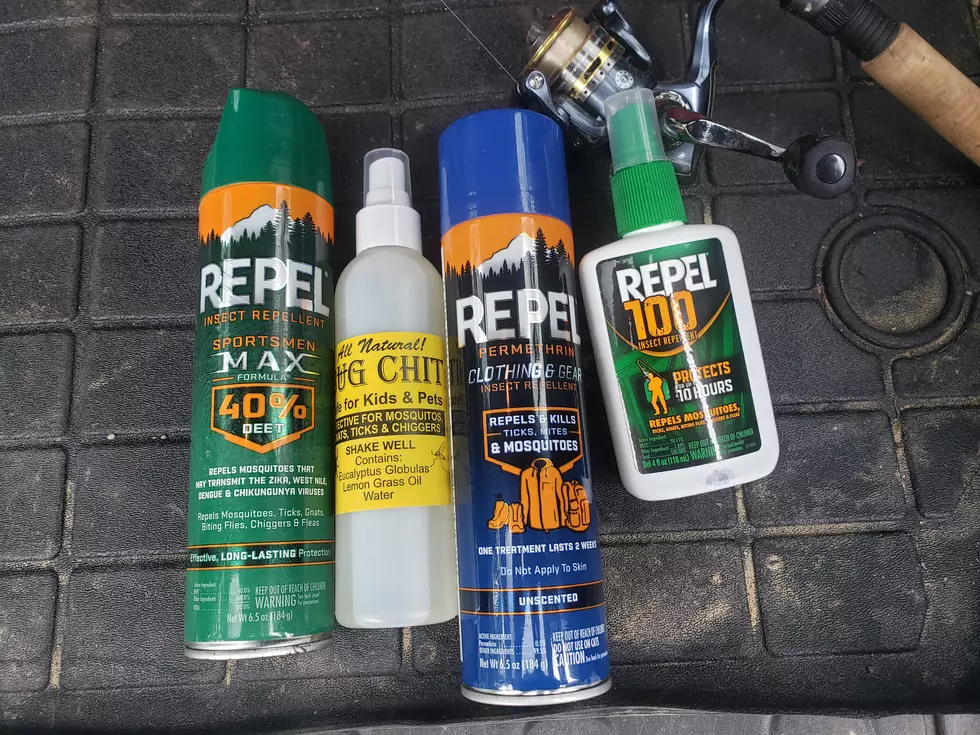
How to Practice Tick Sense in NJ This Summer
Fun time, for sure: cook-outs, camping, backwoods fishing, hiking, trail biking, camping... all which, one way or another, sooner or later, puts one on a collision course with what has become a scourge of the Garden State outdoors scenes: ticks.
The minute bloodsuckers are notorious transmitters of what appears to be a growing list of life-altering diseases. In all, there are four species of these arachnids that are capable of infecting their hosts. The most notorious is the deer (black-legged) tick, infamous for its being a vector for Lymes Disease and the potentially lethal Powassan Virus (a 10-15% fatality rate of those infected; two confirmed cases in NJ), followed by the dog (wood) tick that could pass on Rocky Mountain Spotted Fever, and the Lone Star tick that is responsible primarily for ehrlichiosis. The fourth, the Asian Longhorn tick, was discovered in six counties in New Jersey in 2017 and is now suspected to be in a dozen or so. Two things most dangerous about this new invader: it’s a “swarmer” in that if walking through high grasses, brush or other areas it finds hospitable, chances are that you will have multiple dozens, and more, on your clothing. The second is that the diseases it carries here are unknown, but are responsible for sickness and death to hosts in its native southeast Asian habitat. Wildlife and farm animals are in particular danger, as extreme infestations have been documented as causing death by blood loss.
Overall, here is the list of diseases the bite of an infected tick can cause: anaplasmosis, babesiosis, ehrlichiosis, Lymes Disease, Powassan Virus, tularemia, and Rocky Mountain Spotted Fever.
Despite the health risks, by all means, get out and enjoy what the Garden State outdoors has to offer...BUT by all means, follow a few simple precautions that will greatly curtail any instances of this bug affixing its head under your skin.
The easiest is to utilize a repellent on your clothing, including footwear, and gear, and another on any exposed skin. Those containing Permethrin are to be used on clothing and gear such as knapsacks, fishing vests, sleeping bags, etc. Spray thoroughly, let dry, and the deterrent is good for up to a couple of weeks (in the case of clothing, one or two runs through the washer/dryer). Others, with DEET or Picaradin, can be used on exposed skin and also work for a while on clothing and gear. Opt to use sprays with at least 20% Picaridin, and 25% DEET (we prefer 40% DEET...why skimp?).
By all means do not overlook local, all-natural formulas. One such is Bug Chit. Formulated and distributed from Tuckerton in Ocean County, this pleasant-smelling, quick-drying spray is effective on keeping ticks and chiggers off, and repelling gnats and mosquitoes.
A post-trip examination will reveal any ticks that have managed to evade the precautionary deterrents. Wearing light-colored apparel makes this a lot easier. We carry a lint roller and go through a “roll down”, and are sometimes surprised at the number of tiny tick nymphs that are stuck to the white tape.
If you discover one of the nasties attached, grasp it as close to the skin and gently pull so as to not leave any parts of its mouth inside. Wash with warm water and soap, and swab with rubbing alcohol. The itchiness and redness should subside within a day or two. If a red bullseye-looking rash appears, get to a doctor asap, as this is a tell-tale sign of Lymes. However, said indicator does not always show. Suffice that if the muscle aches, headaches, fatigue, joint pain, neck stiffness, fever and dizziness start, you are most likely infected. These symptoms will occur anywhere from two to seven days upon infection.
More From WPG Talk Radio 95.5 FM









